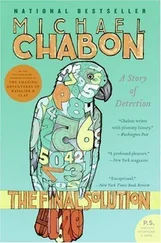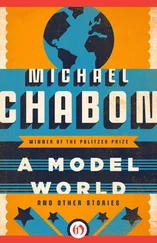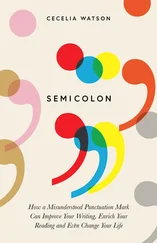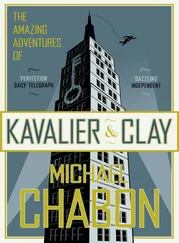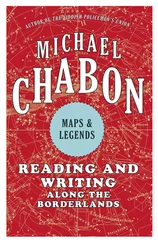I’m sure you will doubt what I tell you next, putting it down to the flawed memory of a small boy with a big imagination, or perhaps even, considering what I am about to say, thinking it all nothing but a pack of lies. That’s precisely why I’ve never said anything about the real golems in my life before now. There was a golem — the most famous golem of all, the Golem of Prague — in my novel The Amazing Adventures of Kavalier & Clay, and since it was published a lot of people have asked me about my interest in that golem and in golems in general. And, because I was afraid to tell the truth and more interested in sounding smart than in sounding crazy, I usually said something about having seen, as a child, a still image from Paul Wegener’s 1915 film Der Golem in a book about fantastic cinema, as if that explained anything, and then after that I would often say something sort of profound and sententious about how the relationship between a golem and its creator is usually viewed as a metaphor for that between the work of art — in my case, a novel — and its creator, and how my ideas about golems had been shaped by reading Gershom Scholem’s famous essay “On the Idea of the Golem,” and blah, blah, blah. When the truth is that golems are real, they are out there now, and they are everywhere. Well, not everywhere, perhaps, but I’ve seen a bunch of them in my own lifetime, and that’s without even trying — believe you me — to find them. As for the Golem of Prague, and the thinly fictionalized role it plays both in Kavalier & Clay and in my life, I’m going to come to that in time.
I’m aware, in making this confession, that I’m revealing something that some of you already know perfectly well, something that is generally agreed to be better left undiscussed. I don’t think it’s exactly taboo for me to reveal the truth about golems — God, I hope not — but what do I know? I’ve never studied kabbalah. If you see shadowy people follow me out of the hall tonight, or if a blow dart suddenly appears in my larynx and I keel over midsentence, you will know that I must have transgressed. I don’t know what exactly is prompting me to come forward now and come out with the truth. I think it has something to do with turning forty, with the growing desire I feel to look backward over my life and to try to shore together, if I can, some kind of retrospective understanding, some sense of meaning and perhaps even wisdom to impart to my children as they grow into full consciousness of the pain and mystery of life. Maybe it has something to do with having won the Pulitzer Prize, which gives a guy a sense, however mistaken, of authority, and which, as far as I know, they will not take away from you even if it is determined that you have lost your mind.
In any event, what I saw when I reached the inner sanctum of Uncle Jack’s workshop, with its tools hanging neatly from their hooks, its table saw and drill press, its swept pile of sawdust in the corner, tidily awaiting the dustpan, was a golem. For those of you who may not, still, be aware of or understand just what exactly a golem is, let me briefly state that a golem is an artificial being, usually but not necessarily human in shape, made from a lump of clay or earth — the word “golem” comes from an ancient Hebrew word meaning “lump”—and brought to life, or to a semblance of life, by mystical means. Some golems are animated by the placing under their tongues of a tablet with one of the names of God written on it, others by having the Hebrew word emet, “truth,” graved onto their broad foreheads, still others by some combination of the two. But in common all golems require above all that a complicated series of alphabetical spells be chanted over them, in the proper order and combination, for hours and hours and hours. Now, according to the great Herr Scholem, the point of golem-making has been greatly exaggerated over the years, embroidered by liars and legend-tellers and, romancers. Originally one — and when I say “one” I mean “a trained adept acting in concert with at least one other trained adept”—originally one made a golem not in the hope of bringing it to life but in the hope of bringing oneself to life. It was a kind of meditative exercise designed, like other kinds of chanting rituals, to free the consciousness. One imitated God’s creation of Adam in the hope of approaching knowledge of the ecstasy and power of that creation.
At any rate, looking back on it, I don’t seriously think my uncle Jack could have had any sincere expectation of bringing his own golem, the Golem of Flushing, to life. I am certain that it was intended only as a vehicle for expanding his consciousness of the Ineffable Name. It lay, as I have said, on his workbench, a big pine slab which he had nailed together himself years before. Honestly I don’t remember all that much about how his golem looked; it had big feet, each with five clay toes; its head was squarish, its nose flat, its hair scratched in with some pointed tool in wiggly swirls. I remember the color of its skin, or rather of the clay from which it had been formed, hardened curds or handfuls of clay that were a rich dark brown like coffee grounds. A colored, I thought. The thing that impressed me the most about the thing was the air of utter inertness that it gave off, something more than lifelessness, heavier and more oppressive. In later years I would think of this golem when I saw cigar-store Indians, and again when I saw the giant lumpy head of John F. Kennedy in the lobby of the Kennedy Center in Washington, D.C. Its eyes were a pair of horizontal slits, slightly bulging, meant to suggest, I suppose, that it was sleeping.
What did I make of it, at the time? I knew, of course, that it was not a real person — Uncle Jack was clearly not the most talented sculptor in the world — but there was something about it that troubled me; it had presence. I wasn’t quite afraid of it, or rather I feared it obscurely, and with a stab of bright curiosity, as I feared and wondered about all kinds of other elements of the world of adults — my mother’s pressing ham, filled with mysterious sand; the heavy wooden trays in which my father kept his microscope slides, smeared with the lung tissue of monkeys. There seemed inherent in that dark clay doll on the table a purpose and a power beyond my imagining.
What can I say? I reached out to touch it, grabbing clumsily at the thing’s left big toe, and the toe came off with a dry tinkling of dust. That was the kind of kid I was. I had poked a hole in my mother’s pressing ham so that forever after it leaked sand; I had broken five or six of my father’s pneumococcus slides. And in my horror at this act of accidental mutilation — and I’m perfectly willing to admit that it was only this, the action of horror and dismay on a childish imagination — I saw the Golem of Flushing open its eyes. I will never forget the sight of the dull, wet gaze, blank, ignorant, afraid, that lighted on my face at that instant. I have no idea how I managed to get out of the basement again. The next thing I remember is sitting in my aunt’s living room, on the slick crinkling plastic of her slipcovered sofa, and hearing my uncle Jack cry out, his voice ragged and cracked, “They killed King!” “Oh, no,” I heard my mother say. “Oh, that’s just awful.” “King who?” I asked, thinking that they were lamenting the death of some monarch.
The night I broke a toe off the Golem of Flushing was the night, as it turned out — April 4, 1968—on which James Earl Ray shot Martin Luther King Jr. There was some rioting over in Harlem, in the course of which somebody set fire to the block that comprised Mount Morris Candy and News, and Uncle Jack’s last-chance enterprise was burned out. In the jumble of misunderstood and half-interpreted news reports, anxious talk, and curt whispering that surrounded this calamity and that seemed to make up the bulk of adult conversation in the week that followed, I heard repeated references to “the black man.” Inevitably, I guess, I was forced to the conclusion that it had been the dark man of clay in Uncle Jack’s basement, angered perhaps by the loss of his toe, who had gone out to Harlem and burnt down the candy store. And it was all my fault.
Читать дальше
Конец ознакомительного отрывка
Купить книгу

